Studio Ghibli's "Spirited Away"("Sen to Chihiro no Kamikakushi") is a coming of age tale, with a twist. The film's heroine, Chihiro, leaves the mundane everyday world to enter the world of the spirits, where she encounters spirits of Japanese legend like Haku, Rin, Kamaji, No Face, and of course, the fearsome witch Yubaba who rules over the bathhouse.
In this article we will examine the characters and themes of the film in depth, and dive deep into the Japanese legends that inspired Hayao Miyazaki to create this award-winning masterpiece. In addition, we will introduce the Onsen Ryokan, or hot spring hotels, that inspired the design of Yubaba's bathhouse, Aburaya. Finally, it wouldn't be "Spirited Away" without an elaborate Japanese feast, so please enjoy our recommendations of some of the best local Japanese food!
The Most Successful Japanese Film Before "Demon Slayer"
"Spirited Away" was released in theaters on July 20, 2001 in Japan and December 20, 2002 in America. The movie made $383.4 million at the worldwide box office and remained the most successful Japanese film for 19 years until it lost the crown to "Demon Slayer: Kimetsu no Yaiba the Movie: Mugen Train" in 2020.
Walt Disney Pictures recognized the potential in "Spirited Away" and purchased the North American distribution rights, which helped the film's international success. "Spirited Away" won many awards including the Academy Award for Best Animated Feature (it was the first non-English, hand-drawn, animated film to do so). The movie was also a co-recipient of the Golden Bear at the 2002 Berlin International Film Festival.
Chihiro is an Unusual Heroine
"Spirited Away’s" heroine is a unique one. In terms of appearance, especially compared with the usual big-eyed anime heroines, Chihiro is quite plain. Her exterior appearance may be quite ordinary, but her internal self is rather remarkable. Faced with adversity, she reveals herself to be clever, hard-working, and extremely perceptive about other characters in the movie.
Though Chihiro starts the movie as a petulant child she matures and gains confidence throughout the story. Ultimately, "Spirited Away" is Chihiro's journey, which Miyazaki hoped would resonate with young girls everywhere.
Miyazaki’s Appeal to the World
"Spirited Away" has had a long-lasting impact on the world due to its excellent animation, naturally, but also due to the movie’s themes: environmentalism, identity, and greed - which manage to be both modern and timeless.
Environmentalism
Environmentalism is a common theme in Ghibli Movies, and it is expressed in "Spirited Away" in the backgrounds of the two river spirits. The elder river spirit is misidentified as a stink spirit, because it is so filthy and full of garbage. While Haku is unable to find his way home because his river of origin was filled in with concrete.
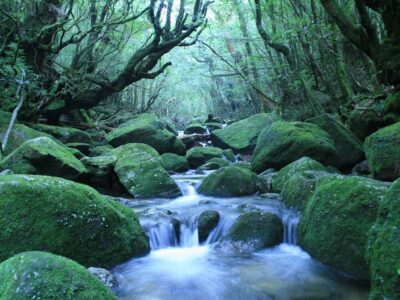
Japan’s Shinto belief has core values of spirits existing in all things, so it’s clear that Miyazaki wants to draw attention to the excessive destruction and pollution of natural areas. The consequences of urban sprawl and modernization affect not only the futures of human beings, but also the spirits that reside there.
Regaining Lost Identity
Identity is also a major theme of Spirited Away. The workers at the bathhouse have all lost their real names to Yubaba, and so they are trapped there. Chihiro and Haku are able to help each other remember their identities and thus able to free themselves.
No Face has no identity, and so he devours the identities of others. He is only able to find his place in the world through the assistance of Chihiro. Chihiro’s parents have also lost the right to live as human beings and are only restored to their true forms thanks to their daughter’s hard work. Ultimately, the common factor for those who regain their identities is Chihiro!
The Destructive Power of Greed
In Spirited Away, greed is something that consumes and destroys. The movie’s antagonist, Yubaba shows a lack of awareness when faced with profit. She doesn’t mind that the monster, No Face, is terrorizing her staff as long as it is a rich customer.
Her apartment is extremely opulent, and jewels are everywhere, a stark contrast would be the humble country home of her sister, Zeniba. Haku is almost killed as a result of Yubaba’s greed, a fact which does not seem to trouble her.
No Face is corrupted by the greed of the bathhouse and its inhabitants, becoming a monster who wants to devour everything, while never being satisfied. Chihiro’s parents also serve as an example of what happens to greedy people, by literally becoming pigs.
The Cast and Crew Who Brought Spirited Away to Life
It takes a certain combination of genius and imagination to create a film like Spirited Away. Hayao Miyazaki acted as writer and director, while his longtime partner, Toshio Suzuki was the producer. This team worked together from the concept, looking at art and discussing story ideas.
Whatever they do must work because the Miyazaki and Suzuki team was later nominated for another Academy Award for "The Wind Rises"! Production Company Studio Ghibli and all of its animators worked tirelessly to bring the maestros vision to life so that distributors Toho and Disney could release the film to theaters on schedule.
However, no Ghibli film is complete without the masterful music of composer Joe Hisaishi. The ending theme for "Spirited Away" is "Always With Me" (Itsumo Nandodemo), beautifully sung by Youmi Kimura.
English Cast
The English dub of "Spirited Away" was very well received - and if Chihiro's voice sounded familiar to you, it's because the actress also voiced the part of Lilo, in Disney's "Lilo and Stitch!" Take a look at the cast list below!
Daveigh Chase: Chihiro Ogino/ Sen
Jason Marsden: Haku/ Spirit of the Kohaku River
Suzanne Pleshette: Yubaba/ Zeniba
David Ogden Stiers: Kamaji
Bob Bergen: No Face, Aogaeru
Susan Egan: Lin/Rin
Michael Chiklis: Akio Ogino, Chihiro's Father
Lauren Holly: Yuko Ogino, Chihiro's Mother
Paul Elding: Chihiyaku
John Ratzenberger: Aniyaku, assistant manager
Japanese Original Cast
Rumi Hiiragi: Chihiro
Miyu Irino: Haku
Mari Natsuki: Yubaba and Zeniba
Bunta Sugawara: Kamaji
Akio Nakamura: No Face
Yumi Tamal: Rin
Takeshi Naito: Chihiro’s father
Yasuko Sawaguchi: Chihiro’s mother
Tsunehiko Kamijo: Chichiyaku
Takehiko Ono: Aniyaku
10 Burning Questions about Spirited Away Characters
The characters of Spirited Away have a great deal of cultural depth. By taking a quick journey through Japanese folklore and the fascinating mind of Hayao Miyazaki we can better understand No Face, Haku, Yubaba, Rin, Kamaji, and the Soot Spirits.
1. What is No Face?
No Face is a character that has fascinated audiences since Spirited Away was released. So, let’s dive right in and try to figure out, what is No Face?
In the film No Face is referred to as a monster by Yubaba. It can devour others and take on their personalities, it can also manifest objects, like gold. However, the things it manifests are just illusions, as the gold No Face creates later turns to ash.
In terms of Japanese folklore there is a creature called a Noppera-bō which is a faceless ghost that takes on human forms to frighten people. It is likely from this creature that Miyazaki drew his inspiration for the character of No Face.
No Face admires Chihiro and wants to gain her attention and affection, in the greedy world of Yubaba’s bathhouse it feels the only way to do this is to give her things. It is confused at first that she will not accepts his offerings, and later it is furious.
2. Why is No Face so interested in Chihiro?
One possibility is that they are both “out of place.” Chihiro’s identity is still forming as she is between childhood and adolescence as well as the human world and the spirit world.
When Chihiro first sees No Face, it is standing in the middle of a bridge, literally between two places, and she is in a similar situation. Clearly the creature forms some connection with her due to this.
Hayao Miyazaki once said that Kaonashi (No Face) is "inside everyone." It is our potential for good and for evil, and possibly even our anxiety about not knowing what our purpose is or where we belong.
Chihiro ultimately does lead No Face to somewhere where it belongs, at Zeniba’s home. At the end of the movie its emotionless mask does seem to have a slight smile; No Face has found its purpose.
3. What Is the Origin of Yubaba?
Yubaba is a powerful witch. She can control others by taking their names, transform herself, use the power of wind, and is even shown breathing fire at one point. She is a shrewd and greedy proprietor of a successful business. Her only point of sentimentality seems to be her large son, Boh.
This kind of character is likely not unfamiliar to Japanese viewers. There is a legend about a mountain witch, Yamamba, with an adopted son named Kintarou. Kinatarou is said to have super-strength and is spoiled by Yamamba.
Sound familiar? There is a painting of Yamamba and Kintarou by Nagasawa Rosetsu at Itsukushima Shrine in Miyajima for those who would like to see the origins of Yubaba.
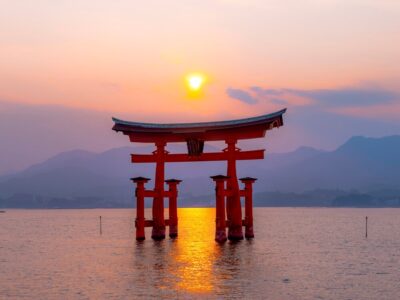
4. Who is Haku?
Everybody that watches Spirited away knows that Haku is the polluted or lost river’s guardian spirit. But here is another theory; Haku is named after Japan’s ancient king.
Though Haku refers to himself as the Kohaku River once Chihiro helps him remember his identity, his full name is actually [饒速水 小白主] Nigihayami-Kohakunushi. The name Nigihayami comes from the Japanese myth of [饒速日命] King Nigihayahi, who was said to be a son of God.
He was the king of ancient Japan who was conquered by the Emperor Jimmu, the first Japanese Emperor whose descendants still remain as symbolic rulers of Japan, Ten-noh. The ancient documents state that Nigihayahi and Jimmu were both empowered by the same gods and both claimed the throne.
Nigihayahi is an enigmatic part of Japanese myth and there are some shrines in Japan that are dedicated to him. The most mysterious ones are Iwafune Shrine (meaning rock-ship) in Nara, Iwafune Dai-jinja Shrine in Osaka and Ishikiri-tsurugiya Shrine in Osaka.
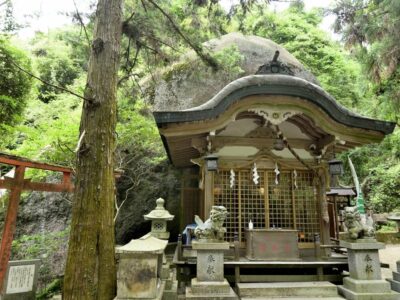
Note the gigantic rock behind the shrine, it's the Goshintai, object of worship, believed to contain the spirit of a deity.
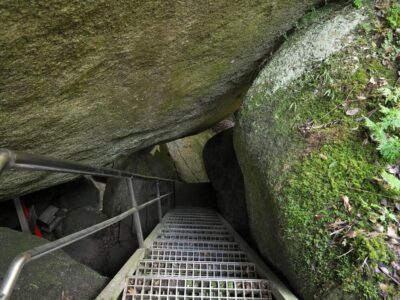
You can even explore under the huge stones.
5. The Spirit Who Powers the Bathhouse: Who is Kamaji?
The identities of some of the spirits in Yubaba’s bathhouse are pretty clear. For example, the radish spirit is clearly the spirit of a Daikon radish. However, for the other characters it is good to have some background knowledge.
Kamaji, with his spider-like appearance, is what is called in Japanese a tsuchigumo, or a humanoid spider. Spiders symbolize hard-work and progress, and Kamaji is actually the key to letting Chihiro progress through her journey. He sends her to Yubaba, and later gives her the train tickets to see Zeniba.
Interestingly enough, in the legend of Nigihayahi (Haku’s namesake) he was helped by a tsuchigumo. This may explain their good relationship in the movie and why Haku told Chihiro to see Kamaji.
Finally, we can’t forget about the the soot spirits (susuwatari or makkuro kurosuke) who power the boiler. What are they? Actually, they are made up by Hayao Miyazaki! You may also remember them from another Ghibli film, "My Neighbor Totoro", where they made their debut.
6. The Kind and Strong Yuna: Rin’s Identity
In the hierarchy of the bathhouse Rin is a type of worker called a Yuna. The Yuna are the female workers in the bathhouse who seem to have mostly serving or cleaning jobs. However, Rin looks different from the other female workers in the bathhouse (who are actually the spirits of slugs!), why is that?
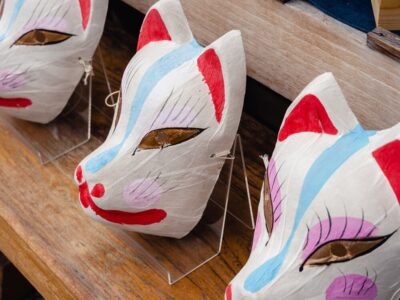
In "The Ghibli Artbook", Rin was revealed to be a Byakko, a white tiger or fox spirit which is said to bring happiness. Foxes are regarded as gods in Japan and known as O-inari-san. You can find many shrines that enshrine fox spirits, including the famous Fushimi-Inari in Kyoto.
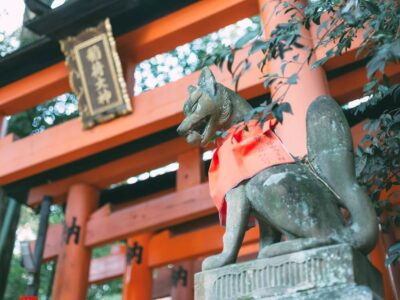
7. Where is the Train Going? Who are the Dark Spirits?
Chihiro gets train tickets from Kamaji to take the train to see Zeniba, the temperate twin-sister of Yubaba, in order to save Haku’s life. Kamaji tells her the tickets are one-way, and she must get off at one particular stop.
Why the one-way tickets? This one-way journey through water could be related to the Japanese mythological river, Sanzu-no-Kawa. Like the river Styx, this is a journey to the afterlife.
The spirits here look different from the spirits at the bathhouse, so it could be that these are human spirits taking their final journey.
8. Why Can’t Chihiro Look Back?
This is a common trope in many legends, such as the legend of Orpheus. In the legend of Orpheus, the hero makes a journey into the underworld to bring back his beloved wife. However, he is told not to look back. Unlike Chihiro, Orpheus does look back and as a result loses his wife for good.
Following this trope, it could mean that if Chihiro looked back she might be unable to move forward or get stuck in the spirit world forever. By not looking back she is also completing her personal journey, growing up, and maturing.
9. How Long Were Chihiro and Her Parents Gone?
When Chihiro and her parents emerge from the tunnel they find that the world has changed in their absence. The grass is grown, and their car is covered in dust and leaves. What has been a few days for Chihiro, and just a moment for her parents, has clearly been much longer.
It is common in fairy tales for time to pass differently in the fantasy world and in the human world. Based on the growth of the grass Chihiro and her parents were likely gone a few weeks. It seems they arrived in early summer and left in the middle of summer. There is a rainy season in Japan around June and landscapes change dramatically during this time.
10. Will Chihiro and Haku Ever Meet Again?
In Spirited Away Miyazaki decided to avoid the trope of a romantic relationship between the male and female leads. Instead he focused on creating a love that was based on friendship and mutual trust. It was a love that could break a deadly spell crafted by a powerful witch.
Since Chihiro and Haku clearly have such a wonderful relationship, it does make the ending bittersweet. Hayao Miyazaki has said that they will meet again in the afterlife, since they know each other’s true names, they will be able to find each other!
Explore the World of "Spirited Away"
Studio Ghibli's Spirited Away is a huge showcase of Japanese culture and architecture, so a tour inspired by the movie is a perfect way for fans to make the most of their time in Japan.
Miyazaki was inspired by a number of real locations in Japan to create Yubaba's gorgeous bathhouse: Aburaya. Read on to find out about Japanese Onsen, museums, and food related to "Spirited Away".
Shima Onsen: Sekizenkan
When you approach Sekizenkan, one of primary inspirations for "Spirited Away", the first thing that will greet you is a broad red bridge. Chihiro and Haku crossed a similar, if not identical bridge in the movie. For some extra fun, you can try to hold your breath while crossing.
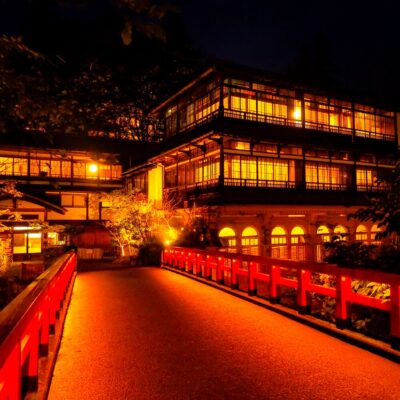
Once you are across you have entered the realm of one Japan's most important cultural assets, so get ready to take a trip through time and enjoy the Japanese atmosphere and traditional food that inspired Hayao Miyazaki to make this famous Ghibli movie.
The Three Buildings of Sekizenkan
The Main Building: Built in 1691, this is the oldest hot spring hotel, or Ryokan, in Japan.
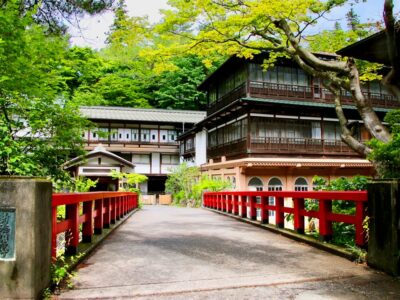
Sanso Building: Built in 1936, this building features delicately carved designs created by master builders of that era. It is a fusion of classical Japanese architecture and modern elegance. It is connected to the main building by a passageway.
Kashotei: This is the Ryokan's newest building. It is located higher up on the mountain and is renowned for its peaceful atmosphere and exquisite scenery.
"The Cure for 40,000 Illnesses"
Though there are many hot spring resorts in Japan, the Shima Onsen area was the first to be officially designated as one. The hot spring at Sekizenkan has been lauded for its health benefits for centuries, earned the title of "the cure for 40,000 illnesses."
Sekizenkan has three onsen areas, including a private one which can be locked: so it's perfect for families or for those who are uncomfortable with using the public onsen.
Genroku no Yu has a unique Romanesque design which dates back to the Taisho era, as it was built in 1930. Mori no Yu consists of both indoor and outdoor baths, which allow visitors to enjoy the atmosphere of nature. Sanso no Yu is the family-friendly private bath.
A Traditional Japanese Feast
If the scene of No-Face enjoying elaborate Japanese cuisine makes you hungry, you are in luck. Sekizenkan features Kaiseki-Ryori, multi-course Japanese meals, which include local and seasonal ingredients and are delivered directly to your room.
この投稿をInstagramで見る
Dogo Onsen Honkan: in Matsuyama City, Shikoku
Dogo Onsen Honkan is located in Matsuyama City, on the island of Shikoku. The interior of this wooden bathhouse is slightly maze-like in appearance, not unlike Yubaba’s bathhouse, with numerous corridors and staircases. Enjoy the Kami no Yu, or bath of the gods which is a classic stone bath. Or, enter the Tama no Yu, the bath of the spirits.
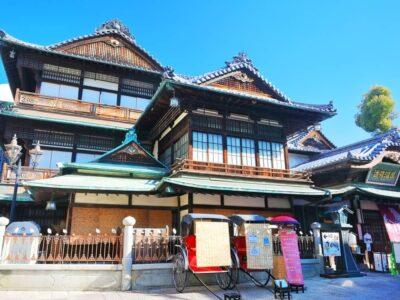
The Dogo Onsen area is an atmospheric, classic, and highly recommended Japanese onsen town. Guests can promenade in their yukata, enjoy shopping, and visit beautiful temples and shrines.
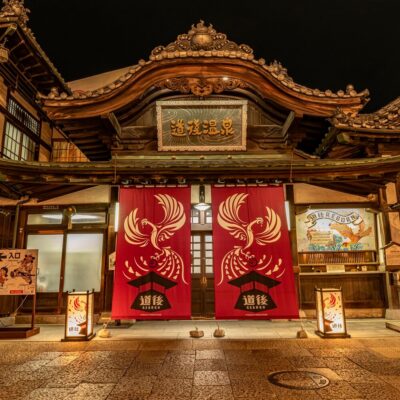
Note: Dogo Onsen has been under construction since 2019, please check the official website for updates.
Ginzan Onsen: Notoya Ryokan
Notoya Ryokan, in the Ginzan Onsen area is a 500-year-old ryokan that offers guests massage services, as well as indoor and outdoor baths. When you see the classic Japanese exterior lit up at night you will feel like you've been spirited away.
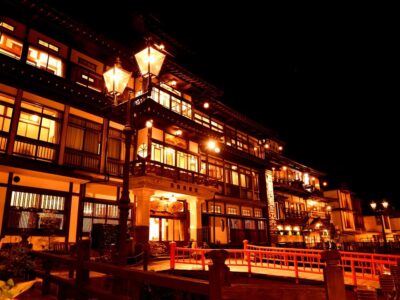
Ginzan Onsen is a quiet, small town, and extremely photogenic, however there isn't much sightseeing in the immediate area. The hotels in the heart of the town are often fully booked, so it's a nice idea to visit this Onsen from Yamagata-city or Sendai-city as a daytrip.
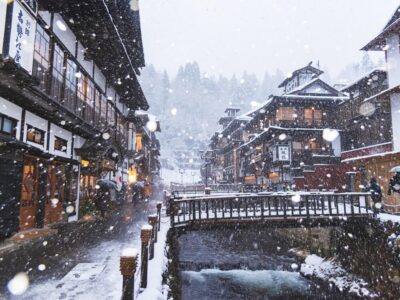
Shibu Onsen: Kanaguya Ryokan, Nagano Prefecture
One of the models for Yubaba’s bathhouse is the Kanaguya Ryokan in Shibu Onsen, Nagano Prefecture.
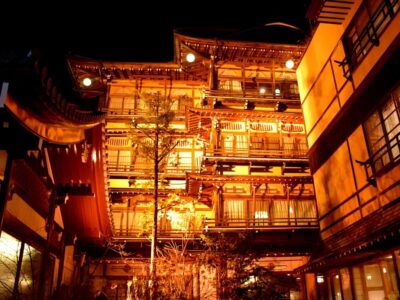
This 250-year-old Onsen has a castle-like appearance, so it’s easy to see why it inspired Hayao Miyazaki and the Ghibli animators. Enjoy a local feast here as you dine on Kaiseki Ryori; elegant Japanese multi-course cuisine.
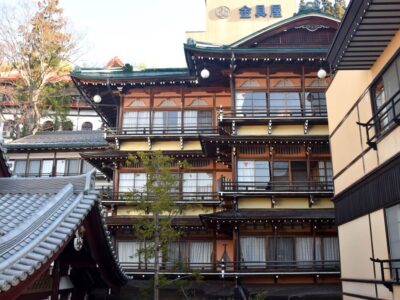
In addition, Nagano prefecture is a place of great natural beauty and one of the best places in Japan to go monkey-watching! One option after enjoying the Studio Ghibli charm of Kanaguya is to go to Jigokudani Monkey Park. Maybe you’ll even see monkeys enjoying the hot springs!
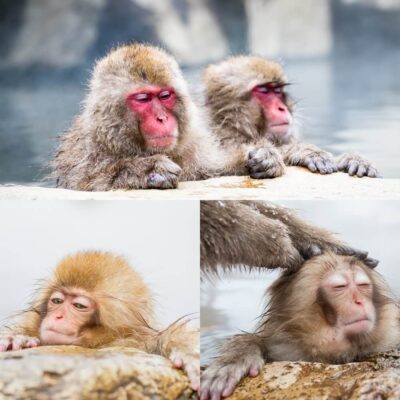
Yubara Onsen’s Aburaya, Okayama prefecture
The next Japanese inn on our list has the same name as Yubaba’s Bathhouse; it is Yubara Onsen’s Aburaya. Studio Ghibli’s animators used the building’s original design from the Meiji era as an inspiration. Though it was renovated during the Heisei era, the open-air bath remains the same.
Edo-Tokyo Open Air Architectural Museum
Our Spirited Away journey ends right in Tokyo at the Edo-Tokyo Open Air Architectural Museum in Koganei.
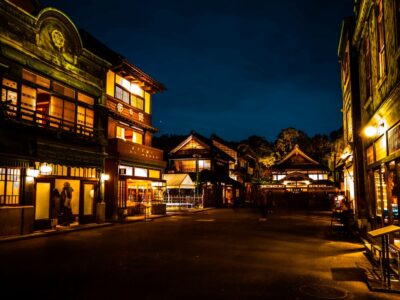
This is a sprawling museum of historic Japanese buildings which Miyazaki often visited for inspiration. You’ll see a lot of buildings that look like they belong in the village surrounding the bathhouse!
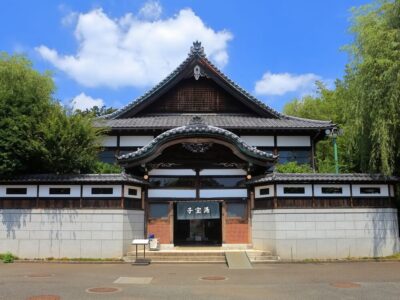
Additionally, there is a small train which looks like the one which appears in "Spirited Away", and even an herbal chamber just like Kamaji's!
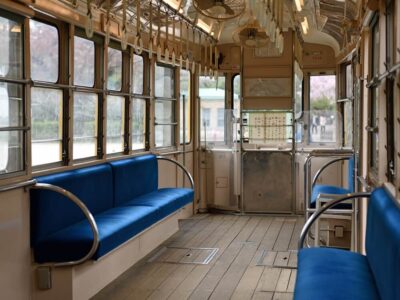
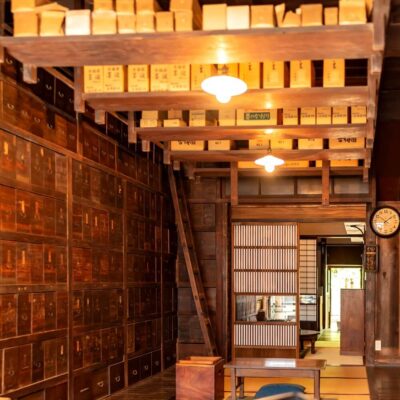
A "Spirited Away" Stay
In an interview Hayao Miyazaki said that he noticed an absence of movies made for 10-year-old girls, no movies that addressed them and the "in-between" space that they occupied. So, "Spirited Away" is for the young, and the young at heart; everyone who is ready to take a journey to a magical world.
We hope that you enjoyed our thoughts on "Spirited Away", and that you are able to visit some of these great Onsen Ryokan when in Japan!
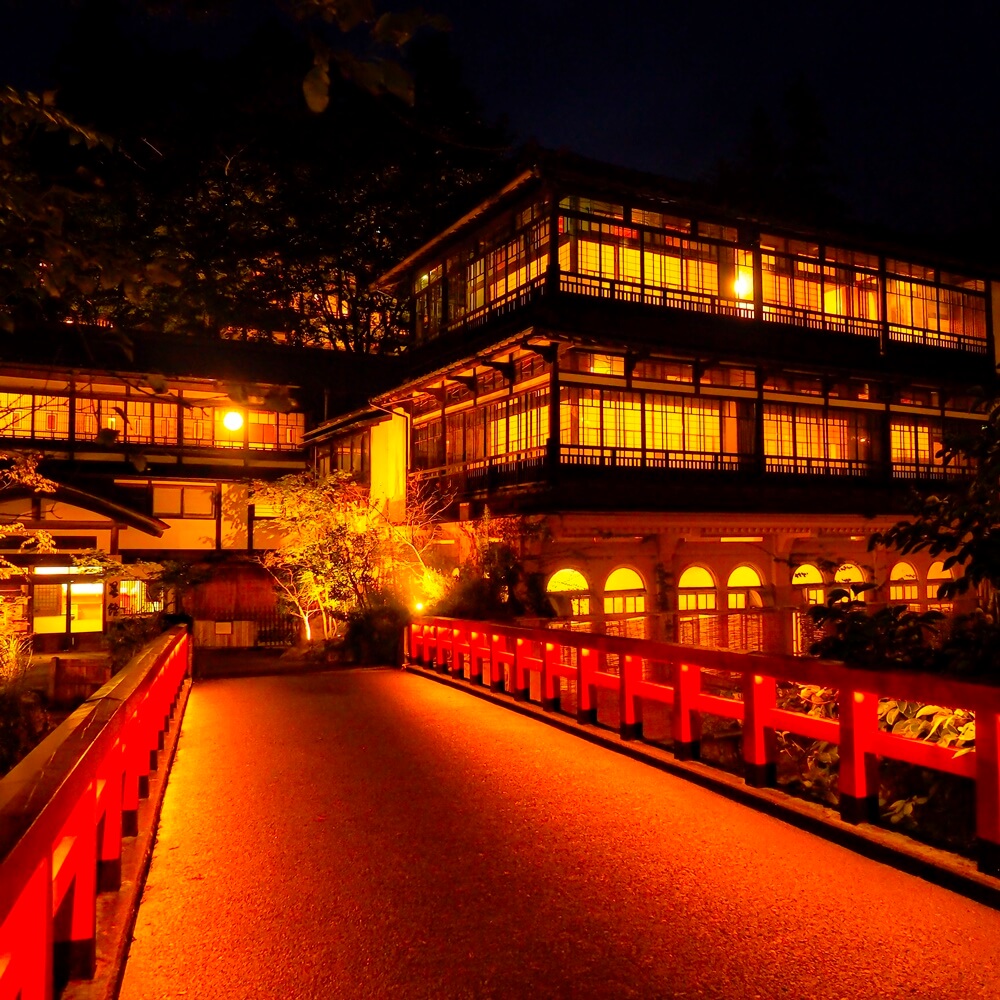
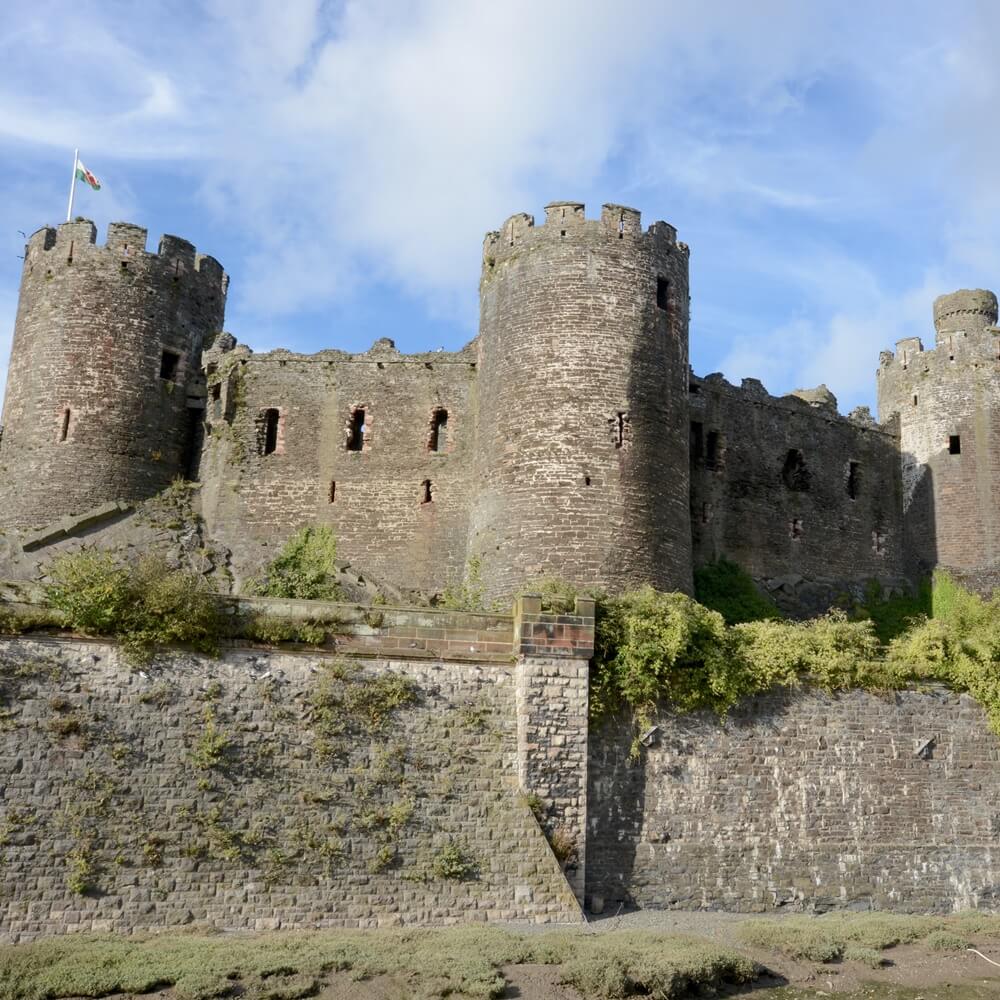
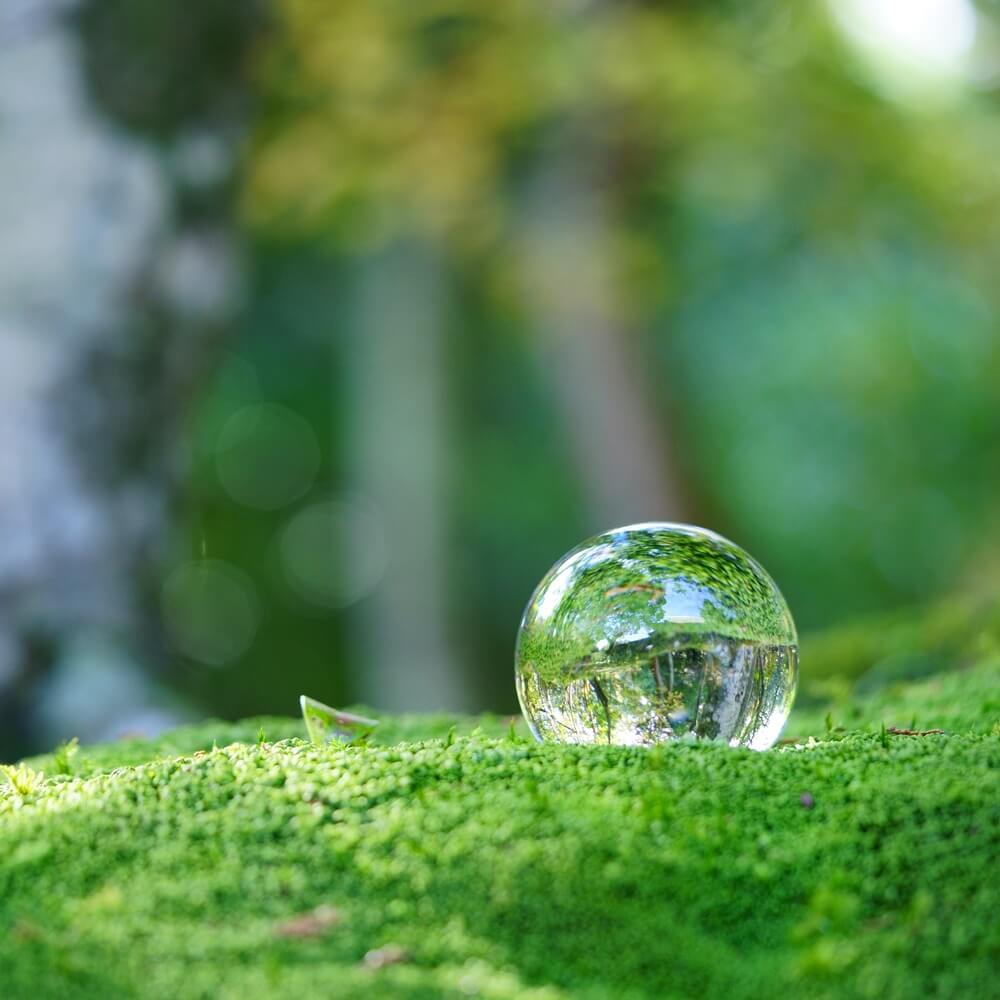
コメント 記事の感想やライターさんへの応援メッセージを送ろう!